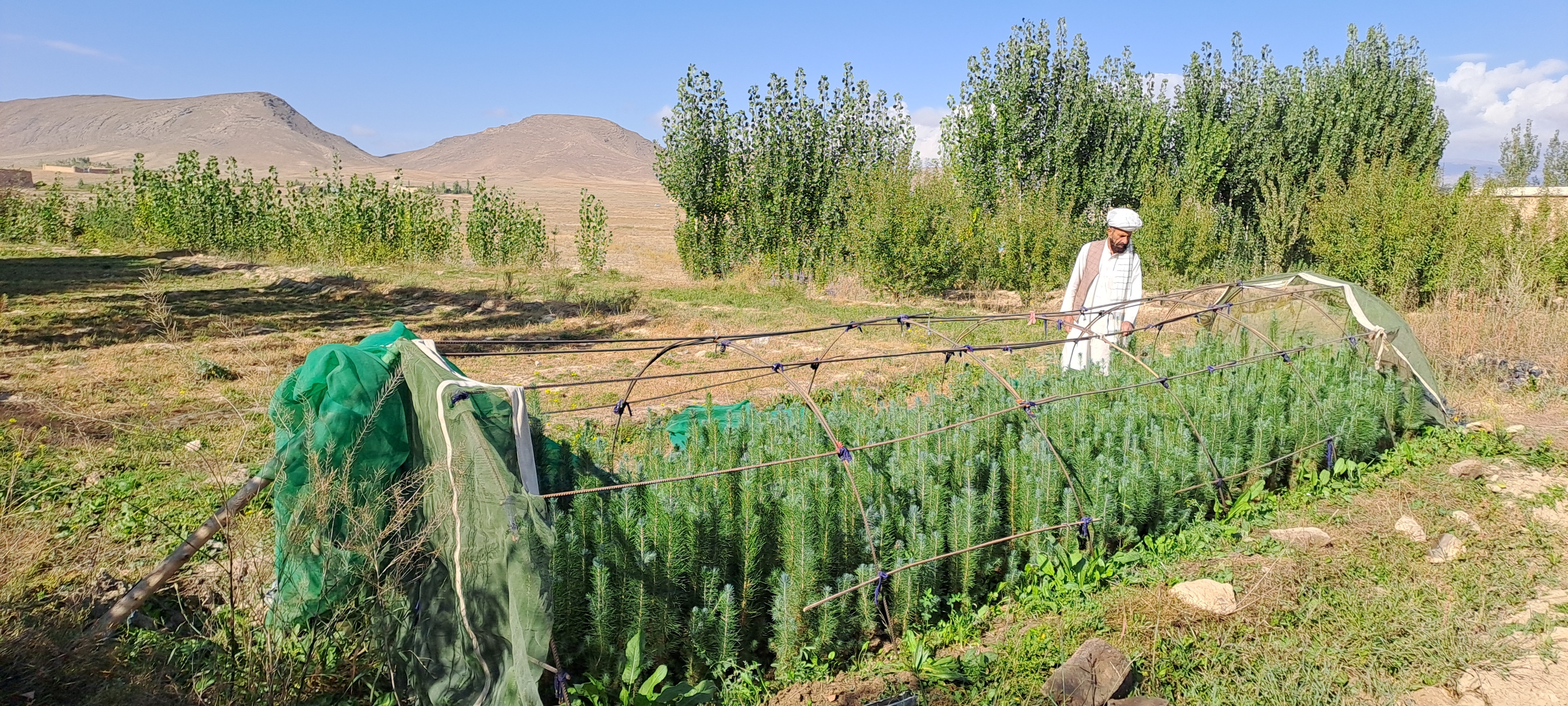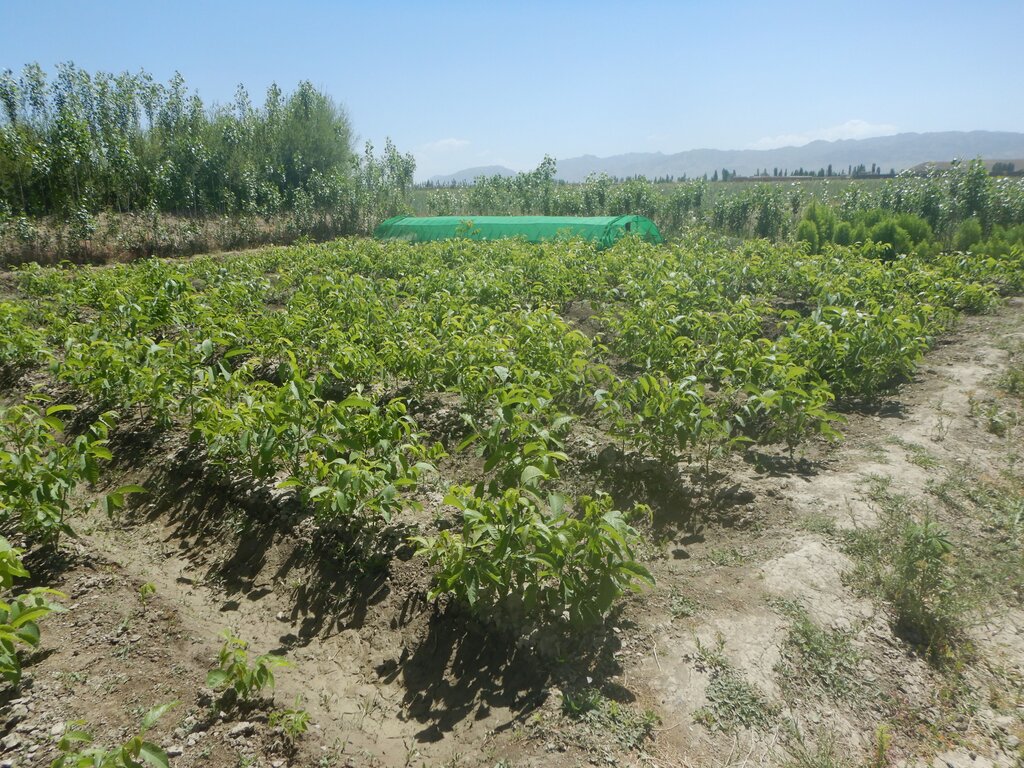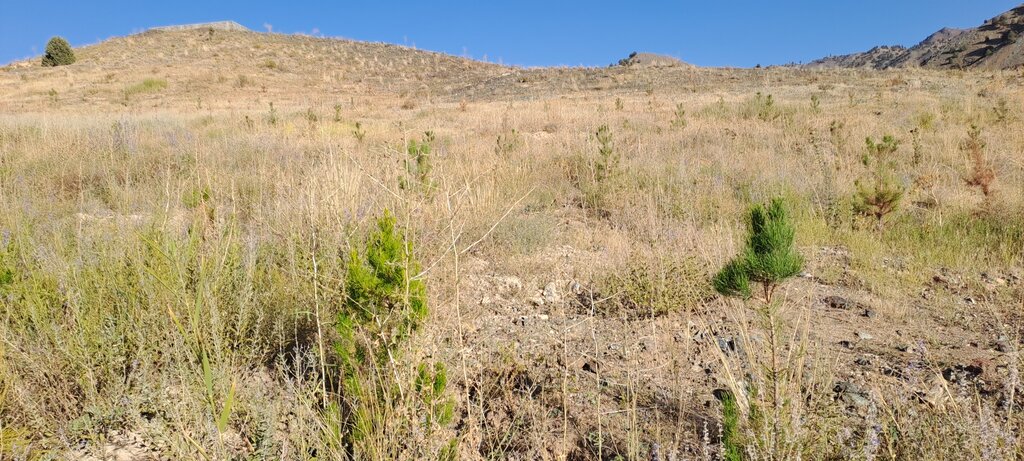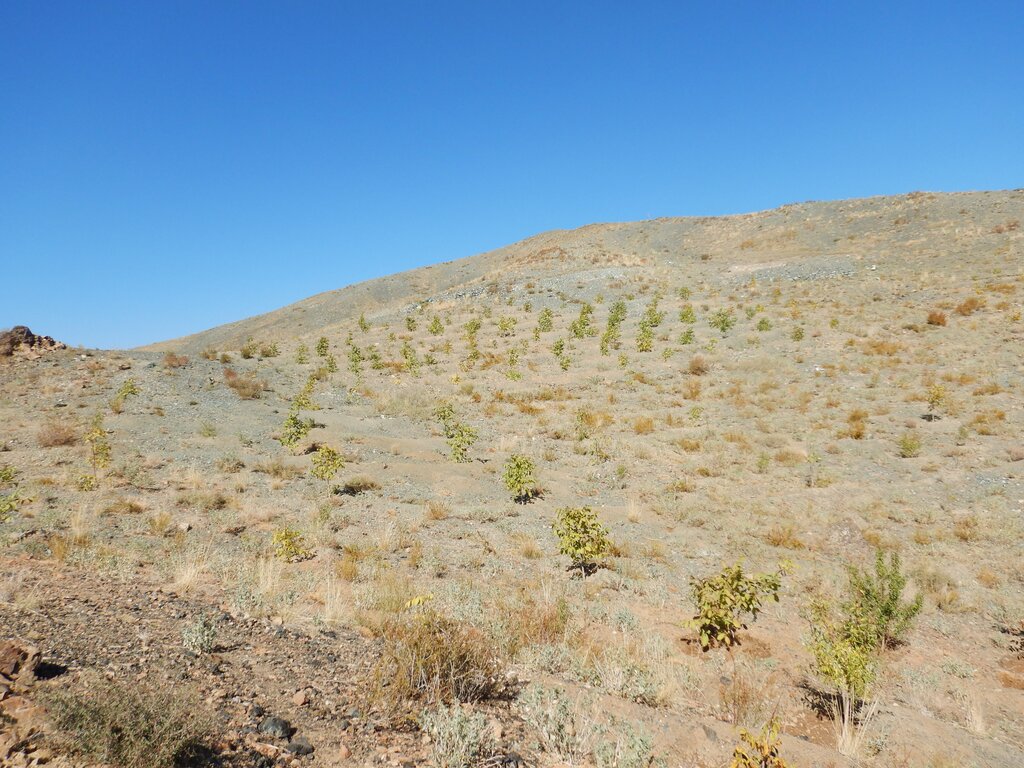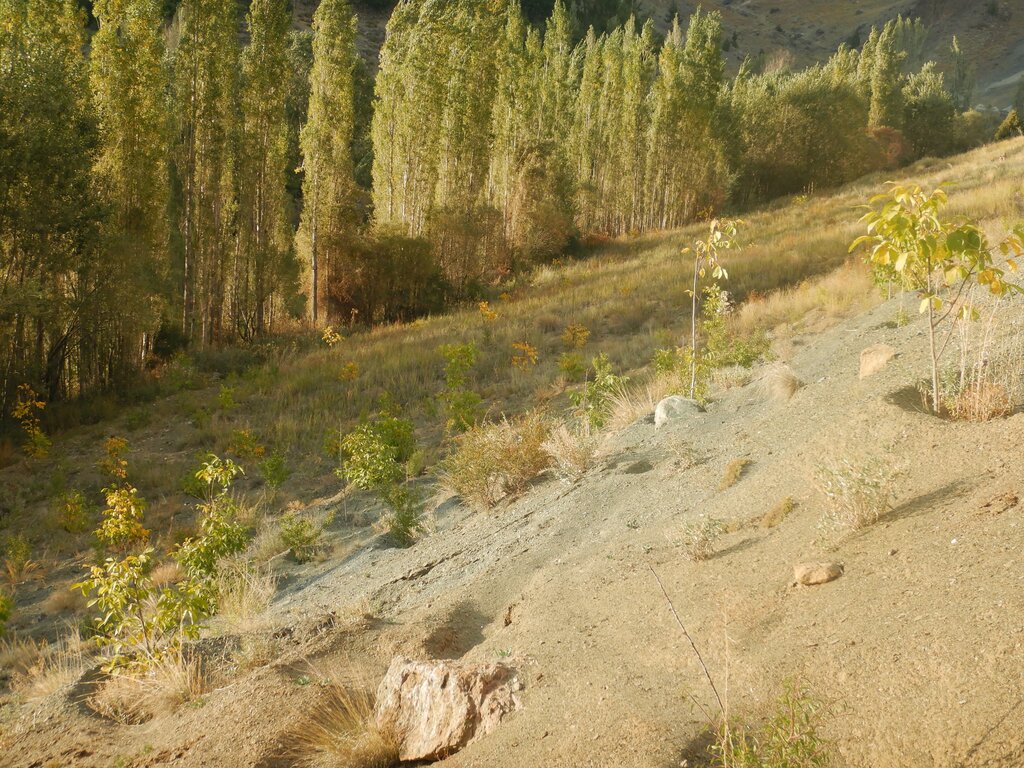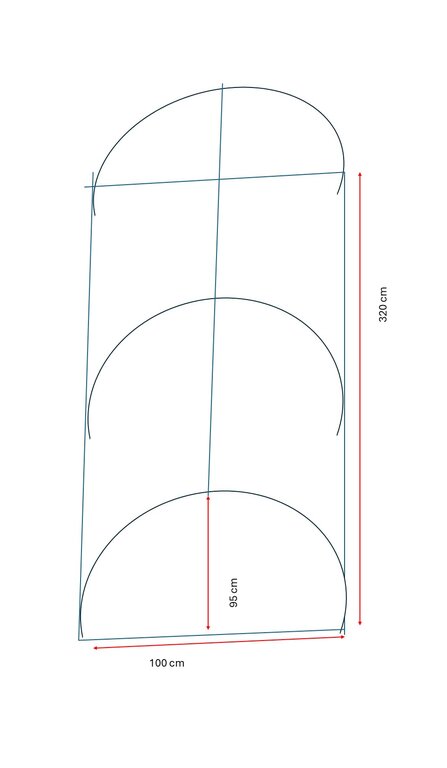Restoration in the High Conservation Value Forests (HCVF) through community-led initiatives in Paktya [ប្រទេសអាហ្វហ្គានិស្ថាន]
- ការបង្កើត៖
- បច្ចុប្បន្នភាព
- អ្នកចងក្រង៖ Mohammad Wazir Ahmadzai
- អ្នកកែសម្រួល៖ Mir Wali Khan Lakanwal, Mohammad Mustafa Sahebzada, Megha Bajaj, Megha bajaj
- អ្នកត្រួតពិនិត្យច្រើនទៀត៖ Rima Mekdaschi Studer, Illias Animon, Muhammad Ishaq Safi
Chilghuza and Nakhter
technologies_7454 - ប្រទេសអាហ្វហ្គានិស្ថាន
- សង្ខេបជា PDF
- សេចក្តីសង្ខេបពេញលេញជាទម្រង់ PDF សម្រាប់បោះពុម្ព
- សេចក្តីសង្ខេបពេញលេញទម្រង់អ៊ីនធឺនេត
- សេចក្តីសង្ខេបពេញលេញ (មិនមានទម្រង់ជាក់លាក់)
- Restoration in the High Conservation Value Forests (HCVF) through community-led initiatives in Paktya: 5 ខែ មិនា ឆ្នាំ 2025 (inactive)
- Restoration in the High Conservation Value Forests (HCVF) through community-led initiatives in Paktya: 24 ខែ មិនា ឆ្នាំ 2025 (inactive)
- Restoration in the High Conservation Value Forests (HCVF) through community-led initiatives in Paktya: 7 ខែ ឧសភា ឆ្នាំ 2025 (public)
ពិនិត្យមើលគ្រប់ផ្នែក
ពង្រីកមើលទាំងអស់ បង្រួមទាំងអស់1. ព័ត៌មានទូទៅ
1.2 ព័ត៌មានលម្អិតពីបុគ្គលសំខាន់ៗ និងស្ថាប័នដែលចូលរួមក្នុងការវាយតម្លៃ និងចងក្រងឯកសារនៃបច្ចេកទេស
បុគ្គលសំខាន់ម្នាក់ (ច្រើននាក់)
អ្នកប្រើប្រាស់ដី:
Sayed Hakim Shah
Forest management Association
ប្រទេសអាហ្វហ្គានិស្ថាន
អ្នកប្រើប្រាស់ដី:
Sabawon Samiullah
Forest mangemnet Association
ប្រទេសអាហ្វហ្គានិស្ថាន
ឈ្មោះគម្រោងដែលបានចងក្រងឯកសារ/ វាយតម្លៃលើបច្ចេកទេស (បើទាក់ទង)
Community-based sustainable land and forest management in Afghanistanឈ្មោះអង្គភាពមួយ (ច្រើន) ដែលបានចងក្រងឯកសារ/ វាយតម្លៃបច្ចេកទេស (បើទាក់ទង)
FAO Afghanistan (FAO Afghanistan) - ប្រទេសអាហ្វហ្គានិស្ថាន1.3 លក្ខខណ្ឌទាក់ទងទៅនឹងការប្រើប្រាស់ទិន្នន័យដែលបានចងក្រងតាមរយៈ វ៉ូខេត
អ្នកចងក្រង និង(បុគ្គលសំខាន់ៗ)យល់ព្រមទទួលយកនូវលក្ខខណ្ឌនានាទាក់ទងទៅនឹងការប្រើប្រាស់ទិន្នន័យដែលបានចងក្រងតាមរយៈវ៉ូខេត:
បាទ/ចា៎
1.4 សេចក្តីប្រកាសស្តីពីចីរភាពនៃការពណ៌នាពីបច្ចេកទេស
តើបច្ចេកទេសដែលបានពណ៌នានេះមានបញ្ហាដែលផ្តោតលើការធ្លាក់ចុះគុណភាពដី, បើដូច្នេះវាមិនអាចត្រូវបានប្រកាសថាជាបច្ចេកទេសនៃការគ្រប់គ្រងប្រកបដោយចីរភាពទេ?
ទេ
2. ការពណ៌នាពីបច្ចេកទេស SLM
2.1 ការពណ៌នាដោយសង្ខេបពីបច្ចេកទេស
និយមន័យបច្ចេកទេស:
An integrated community-led initiative has been established to restore the degraded forests in Paktya province. This initiative focuses on setting up nurseries and incorporates both indigenous and scientific knowledge to cultivate climate-resilient species, such as Cedrus deodara and Pinus gerardiana. These efforts have enhanced the community’s knowledge and skills in sapling production and transplantation, leading to significant improvements in the productivity of these key species, which holds substantial ecological, social, cultural and economic values.
2.2 ការពណ៌នាលម្អិតពីបច្ចេកទេស
ការពណ៌នា:
The technology is applied in the communities of Ahmad Aba and Sayed Karam districts in the Paktya province, focusing on restoration of high conservation value forests. It is implemented through direct support of 13 Forest Management Associations (FMAs).
Key members of FMA participated in capacity building focused on community -based natural resources management (CBNRM), establishment of community-based nurseries and restoration of degraded forest .The aim of the capacity building initiative was to enhance the ability of the associations to restore the degraded area and implement sustainable practices, particularly through establishment of community-based nurseries, production of saplings and subsequent planting of these saplings in targeted restoration sites .
Over the past three years, 67 nurseries have been established, focusing on climate- resilient species such as Cedrus deodara, Pinus jerardiana, and Juglans regia, among others species by integrating both indigenous and scientific knowledge. Indigenous knowledge includes practices such as pre-irrigation, the use of animal-powered initial plowing with hand-held hoes, weed removal, and other traditional techniques. Scientific recommendations include improvement of sapling production, adaption of soil inoculation with Mycorrhiza, species-specific sowing methods, controlled temperature management in greenhouses, effective watering/irrigation techniques (manually and using sprinklers).
The project has significantly enhanced sapling production and transplantation for reforestation purposes. The community-based nurseries were established using carefully selected seeds, chosen based on seed quality, sowing timing, and the process of breaking seed dormancy. Saplings were then raised in the nurseries for the first 2 to 3 years until, they are ready for transplantation. These saplings are then transplanted to the degraded forest areas. The land preparation and digging of pits were carried out in the restoration sites before transplanting saplings. After transplanting, FMAs took care of the saplings. Additionally, mechanical pests and diseases control measures were employed to produce good-quality saplings in community-based nurseries. These interventions raised community awareness on forest condition and management and thereby enhanced their capacities to improve the forest cover.
Major activities include site assessment and pre-planning, selection of high conservation value tree species, site selection, technical training on site management (preparation of soil, sowing method, irrigation management, greenhouse) and capacity building of the communities and beneficiaries on nursery soil mixture preparation, breaking of dormancy using different techniques, sapling production and transplantation.
The 13 Forest Management Associations (FMAs) are the legal institutions for the management of natural resources; they hold a license for reforestation activities in degraded forests. They are officially registered with Ministry of Agriculture, Irrigation and Livestock (MAIL). FMAs are responsible for implementing the restoration measures. These communities showed commitments for the transplantation, irrigation and regular patrolling of the saplings.
The goal of the restoration efforts is to enhance the capacity of the local community on methods of in-situ and ex-situ biodiversity conservation and creation of a recreational site. It also aimed to raise the awareness towards mitigation of climate change, and ultimately improve the livelihoods of rural populations. The application of technologies offers cost-effective and eco-friendly restoration of the high conservation value forest especially of pine (Pinus jerardiana) and deodar (Cedrus deodara). Additionally, it provided work opportunities and income generation for 100 families. The technology is well-suitable for replication and adaptation in the local context. As a result, the local community consistently produces the necessary saplings for reforestation and supplies them to the project at a reasonable cost every year.
2.3 រូបភាពនៃបច្ចេកទេស
2.4 វីដេអូនៃបច្ចេកទេស
កាលបរិច្ឆេទ:
09/12/2024
ទីតាំង:
Afghanistan
ឈ្មោះអ្នកថតវីឌីអូ:
Mohammad Wazir Ahmadzai
2.5 ប្រទេស/តំបន់/ទីតាំងកន្លែង ដែលបច្ចេកទេសត្រូវបានអនុវត្ត និងបានគ្រប់ដណ្តប់ដោយការវាយតម្លៃនេះ
ប្រទេស:
ប្រទេសអាហ្វហ្គានិស្ថាន
តំបន់/រដ្ឋ/ខេត្ត:
Paktya
បញ្ជាក់បន្ថែមពីលក្ខណៈនៃទីតាំង:
Ahmad Aba and Sayed Karam
បញ្ជាក់ពីការសាយភាយនៃបច្ចេកទេស:
- អនុវត្តនៅកន្លែងជាក់លាក់មួយ/ ប្រមូលផ្តុំនៅតំបន់តូចៗ
តើបច្ចេកទេស (មួយ ឬច្រើន) ទាំងនោះស្ថិតនៅក្នុងតំបន់ការពារជាអចិន្ត្រៃយ៍ណាមួយដែរឬទេ?
ទេ
មតិយោបល់:
In each forest management association, five community-based nurseries have been established, each covering less than 0.004 hectares. Once the saplings are ready for transplantation, typically after 2 to 3 years, they are transported from the nurseries to the restoration sites for planting. A total of 2,718 hectares of forest area have been restored in both Ahmad Aba and Sayed Karam districts. Community-based nurseries have been established in various villages and are being scaled up through the nursery owners to produce the saplings required for reforestation. The map highlights only these two districts.
Map
×2.6 កាលបរិច្ឆេទនៃការអនុវត្ត
បង្ហាញឆ្នាំនៃការចុះអនុវត្ត:
2021
2.7 ការណែនាំពីបច្ចេកទេស
សូមបញ្ជាក់តើបច្ចេកទេសត្រូវបានណែនាំឱ្យអនុវត្តដោយរបៀបណា:
- តាមរយៈគម្រោង / អន្តរាគមន៍ពីខាងក្រៅ
3. ចំណាត់ថ្នាក់នៃបច្ចេកទេស SLM
3.1 គោលបំណងចម្បង (១ ឬច្រើន) នៃបច្ចេកទេសនេះ
- កាត់បន្ថយ, បង្ការ, ស្តារឡើងវិញនូវការធ្លាក់ចុះគុណភាពដី
- អភិរក្សប្រព័ន្ធអេកូឡូស៊ី
- អភិរក្ស/ធ្វើឱ្យប្រសើរឡើងជីវចម្រុះ
- បន្ស៊ាំទៅនឹងការប្រែប្រួលអាកាសធាតុ/គ្រោះមហន្តរាយ និងផលប៉ះពាល់របស់វា
- បង្កើតផលប្រយោជន៍សេដ្ឋកិច្ច
3.2 ប្រភេទដីប្រើប្រាស់មួយប្រភេទ (ច្រើនប្រភេទ) ដែលបានអនុវត្តបច្ចេកទេស
ដីប្រើប្រាស់ចម្រុះនៅលើដីតែមួយ:
ទេ

ដីព្រៃ/ដីដាំដើមឈើ
- ការដាំដើមឈើ ការដាំព្រៃឡើងវិញ
ការដាំដើមឈើ ការដាំដើមឈើឡើងវិញ៖ បញ្ជាក់ពីប្រភេទក្នុងតំបន់ និងប្រភេទលុប:
- ពូជបញ្ចូលគ្នា
ប្រភេទដើមឈើដែលដាំនៅកន្លែងដែលមិនធ្លាប់មានឈើពីមុន :
- ព្រៃស្ងួតដាំតំបន់ពាក់កណ្តាលត្រូពិច - Pinus spp.
ប្រភេទឈើ:
- Pinus species (pine)
តើប្រភេទឈើខាងលើជាប្រភេទឈើក្នុងព្រៃល្បោះ ឬស្រោង?
- ព្រៃល្បោះចម្រុះ/ ព្រៃស្រោង
ផលិតផល និងសេវាកម្ម:
- ឈើហ៊ុប
- អុស
- ផ្លែឈើ និងគ្រាប់ធញ្ញជាតិ
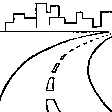
លំនៅដ្ឋាន ហេដ្ឋារចនាសម្ព័ន្ធ
- plastic tunnels in nurseries
កំណត់សម្គាល់:
The community-based nurseries are established in the village near to the forest areas.
3.3 បន្ទាប់ពីអនុវត្តបច្ចេកទេស តើដីប្រើប្រាស់មានការប្រែប្រួលដែររឺទេ?
បន្ទាប់ពីអនុវត្តបច្ចេកទេស តើដីប្រើប្រាស់មានការប្រែប្រួលដែររឺទេ?
- ទេ (បន្តទៅសំណួរ 3.4)
3.4 ការផ្គត់ផ្គង់ទឹក
ការផ្គត់ផ្គង់ទឹកនៅកន្លែងអនុវត្តបច្ចេកទេស:
- ទឹកភ្លៀង និងប្រព័ន្ធស្រោចស្រព
មតិយោបល់:
Nurseries are irrigated. After transporting saplings, supplementary irrigation is required till five years. After the establishment of saplings, rainfed irrigation is enough.
3.5 ក្រុម SLM ដែលបច្ចេកទេសស្ថិតនៅក្នុង
- គ្រប់គ្រងការដាំព្រៃឈើ
- ធ្វើឱ្យប្រសើរឡើងគម្របដី/ ដំណាំគម្របដី
- ការស្តុកទុកទឹក
3.6 វិធានការ SLM ដែលបញ្ចូលនូវបច្ចេកទេស

វិធានការរុក្ខជាតិ
- V1: ឈើធំៗ និងដើមឈើតូចៗ

វិធានការរចនាស័ម្ពន្ធ
- S1: ការធ្វើដីថ្នាក់ៗតាមជម្រាលភ្នំ
- S4: កម្រិតភ្លឺ រណ្តៅ
3.7 កំណត់ប្រភេទនៃការធ្លាក់ចុះគុណភាពដីសំខាន់ៗដែលបច្ចេកទេសនេះបានដោះស្រាយ

ការហូរច្រោះដីដោយសារទឹក
- Wt: ការបាត់ដីស្រទាប់លើដោយការហូរច្រោះ

ការបាត់ដីដោយសារខ្យល់
- Et: ការបាត់បង់ដីស្រទាប់លើ
3.8 ការពារ កាត់បន្ថយ ឬស្តារឡើងវិញនៃការធ្លាក់ចុះគុណភាពដី
បញ្ជាក់ពីគោលដៅរបស់បច្ចេកទេស ដែលផ្តោតទៅការធ្លាក់ចុះគុណភាពដី:
- ការកាត់បន្ថយការធ្លាក់ចុះគុណភាពដី
- ការជួសជុល/ ស្តារឡើងវិញនៃឱនភាពដីធ្ងន់ធ្ងរ
4. បច្ចេកទេសជាក់លាក់ សកម្មភាពអនុវត្ត ធាតុចូល និងថ្លៃដើម
4.1 គំនូសបច្ចេកទេសនៃបច្ចេកទេសនេះ
លក្ខណៈពិសេសនៃបច្ចេកទេស (ទាក់ទងនឺងគំនូរបច្ចេកទេស):
All the saplings are grown under plastic tunnels, except for walnut, which is cultivated on raised beds (see photo). The technical drawing shows a prototype of the plastic tunnels used in the nursery. The plastic tunnel are constructed with dimensions of 95 cm in height, 100 cm in width, and 320 cm in length. During the winter, the saplings in the polybags under the tunnel are covered with transparent plastic to protect the saplings from the cold and in the summer, the plastic is removed and replaced with green netting to protect the saplings from overheating inside the tunnel and providing shade. The tunnels are oriented in a north-south direction to optimize exposure to daily sunlight. The selected area for plastic tunnel establishment was flat and at lower altitude minimizing the severe impacts of wind, sunlight, rain fall, snow fall and climate change.
Ventilation holes were installed on both ends of the tunnels to ensure optimal air circulation, promoting healthy plant growth and development. Each tunnel’s construction utilized 15 kilograms (kg) of 12 mm steel bars. Additionally, a green net with a width of 4 meters, along with 15 square meters of plastic (10 % transparent and 1 mm thick) was required to cover the tunnels. After 2 to 3 years, then the saplings are transplanted to restoration sites. Based on our practice, Pinus saplings are cultivated with a spacing of 5 meters between rows and 5 meters between plants. This arrangement ensures that 400 saplings will cover 1 hectare of land. For walnut saplings, we plant 100 saplings per hectare, with a spacing of 10 meters between rows and 10 meters between plants.
ឈ្មោះអ្នកនិពន្ធ:
Mohammad Wazir Ahmadzai
កាលបរិច្ឆេទ:
18/12/2024
4.2 ព័ត៌មានទូទៅដែលពាក់ព័ន្ធនឹងការគណនាធាតុចូល និងថ្លៃដើម
កំណត់របៀបនៃការគណនាថ្លៃដើម និងធាតុចូល:
- ក្នុងឯកតាបច្ចេកទេស
បញ្ជាក់ឯកតា:
1 plastic tunnel
កំណត់រូបិយប័ណ្ណសម្រាប់ថ្លៃដើម:
- ដុល្លារ
កំណត់ថ្លៃឈ្នួលជាមធ្យមនៃការជួលកម្លាំងពលកម្មក្នុងមួយថ្ងៃ:
5 USD
4.3 សកម្មភាពបង្កើត
| សកម្មភាព | រយៈពេល (រដូវកាល) | |
|---|---|---|
| 1. | Site assessment and selection for establishing nurseries | October |
| 2. | Land preparation and filling of polybags with soil mixture | November |
| 3. | Purchasing of local seed (Juglans regia, Pinus jerardiana, Pinus eldarica, and Cedrus deodara) | November |
| 4. | Breaking dormancy of seed in soil bed or in room using different techniques | December |
| 5. | Irrigation after seeds are sown in raised beds and polybags | 15, 30, 45 DAY |
| 6. | Construction of plastic tunnels, seeding in raised beds and polybags | November |
| 7. | Transplantation of saplings after 2 to 3 years to the restoration area | March |
មតិយោបល់:
In this section the establishment of nurseries and production of saplings is in focus and not the transplantation of saplings to the areas to be reforested.
4.4 ថ្លៃដើម និងធាតុចូលដែលត្រូវការសម្រាប់ការបង្កើតបច្ចេកទេស
| បញ្ជាក់ពីធាតុចូល | ឯកតា | បរិមាណ | ថ្លៃដើមក្នុងមួយឯកតា | ថ្លៃធាតុចូលសរុប | % នៃថ្លៃដើមដែលចំណាយដោយអ្នកប្រើប្រាស់ដី | |
|---|---|---|---|---|---|---|
| កម្លាំងពលកម្ម | Land preparation (plowing of land, filling of polybags) | Man-days | 4,0 | 5,0 | 20,0 | 100,0 |
| កម្លាំងពលកម្ម | Irrigation | Man-days | 8,0 | 5,0 | 40,0 | 100,0 |
| កម្លាំងពលកម្ម | Construction of tunnel | Man-days | 2,0 | 5,0 | 10,0 | 100,0 |
| កម្លាំងពលកម្ម | Sowing of seeds | Man-days | 2,0 | 5,0 | 10,0 | 100,0 |
| កម្លាំងពលកម្ម | Metal worker | Mand-days | 2,0 | 5,0 | 10,0 | |
| សម្ភារៈ | Shovels | PC | 4,0 | 3,0 | 12,0 | |
| សម្ភារៈដាំដុះ | Seed (Pinus jerardiana) | Kg | 2,0 | 12,5 | 25,0 | |
| សម្ភារៈដាំដុះ | Seed (Pinus elderica) | Kg | 2,0 | 12,5 | 25,0 | |
| សម្ភារៈដាំដុះ | Seed (Juglans regia) | Kg | 52,0 | 4,0 | 208,0 | |
| សម្ភារៈដាំដុះ | Seed (Cedrus deodara) | Kg | 1,0 | 12,5 | 12,5 | |
| ជី និងសារធាតុពុល | Fertilizer (UREA & DAP) | Kg | 26,0 | 1,0 | 26,0 | |
| ជី និងសារធាតុពុល | Mycorrhizal affected soil | Kg | 1000,0 | 0,05 | 50,0 | 100,0 |
| សម្ភារៈសាងសង់ | Green net | Kg | 25,0 | 7,0 | 175,0 | |
| សម្ភារៈសាងសង់ | Transparent plastic | Kg | 25,0 | 5,0 | 125,0 | |
| សម្ភារៈសាងសង់ | Steal bar (12 mm) | Kg | 330,0 | 1,0 | 330,0 | |
| សម្ភារៈសាងសង់ | Polybags | Kg | 30,0 | 3,0 | 90,0 | |
| ថ្លៃដើមសរុបក្នុងការបង្កើតបច្ចេកទេស | 1168,5 | |||||
| ថ្លៃដើមសរុបក្នុងការបង្កើតបច្ចេកទេសគិតជាដុល្លារ | 1168,5 | |||||
ប្រសិនបើអ្នកប្រើប្រាស់ដីមិនមានថ្លៃដើម 100% សូមបញ្ជាក់ថានរណាដែលចំណាយថ្លៃដើមដែលនៅសល់:
The project offered material support
មតិយោបល់:
Fertilizer applied at beginning one time
4.5 សកម្មភាពថែទាំ
| សកម្មភាព | ពេលវេលា/ ភាពញឹកញាប់ | |
|---|---|---|
| 1. | Weed management | frequently |
| 2. | Pest and disease control and management | Frequently |
| 3. | Dead plants are replaced by cultivating seeds in the nurseries (10%) | Second year of cultivation of seeds (spring) |
| 4. | Irrigation | Frequently |
4.6 កំណត់ថ្លៃដើមសម្រាប់ការថែទាំ/ សកម្មភាពរបស់បច្ចេកទេស (ក្នុងរយៈពេលមួយឆ្នាំ)
| បញ្ជាក់ពីធាតុចូល | ឯកតា | បរិមាណ | ថ្លៃដើមក្នុងមួយឯកតា | ថ្លៃធាតុចូលសរុប | % នៃថ្លៃដើមដែលចំណាយដោយអ្នកប្រើប្រាស់ដី | |
|---|---|---|---|---|---|---|
| កម្លាំងពលកម្ម | Weed management | Man days | 6,0 | 5,0 | 30,0 | 100,0 |
| កម្លាំងពលកម្ម | Pest and disease control and management | Man days | 3,0 | 5,0 | 15,0 | 100,0 |
| កម្លាំងពលកម្ម | Reseeding for exchanging dead seedlings | Man days | 3,0 | 5,0 | 15,0 | 100,0 |
| កម្លាំងពលកម្ម | Changing plastic and green net seasonally | Man days | 3,0 | 5,0 | 15,0 | 100,0 |
| កម្លាំងពលកម្ម | Irrigation | Man days | 10,0 | 5,0 | 50,0 | 100,0 |
| សម្ភារៈសាងសង់ | Transparent plastic | Kg | 25,0 | 5,0 | 125,0 | |
| សម្ភារៈសាងសង់ | Green net | Kg | 25,0 | 7,0 | 175,0 | |
| ថ្លៃដើមសរុបសម្រាប់ការថែទាំដំណាំតាមបច្ចេកទេស | 425,0 | |||||
| ថ្លៃដើមសរុបសម្រាប់ការថែទាំដំណាំតាមបច្ចេកទេសគិតជាដុល្លារ | 425,0 | |||||
ប្រសិនបើអ្នកប្រើប្រាស់ដីមិនមានថ្លៃដើម 100% សូមបញ្ជាក់ថានរណាដែលចំណាយថ្លៃដើមដែលនៅសល់:
The project covered 100% of the costs for tools and services.
4.7 កត្តាសំខាន់បំផុតដែលមានឥទ្ធិពលដល់ការចំណាយ
ពណ៌នាពីកត្តាប៉ះពាល់ចម្បងៗទៅលើថ្លៃដើម:
The most important factors that affect the overall cost are the materials used to construct the plastic tunnel and the cost of seeds.
5. លក្ខណៈបរិស្ថានធម្មជាតិ និងមនុស្ស
5.1 អាកាសធាតុ
បរិមាណទឹកភ្លៀងប្រចាំឆ្នាំ
- < 250 មម
- 251-500 មម
- 501-750 មម
- 751-1,000 មម
- 1,001-1,500 មម
- 1,501-2,000 មម
- 2,001-3,000 មម
- 3,001-4,000 មម
- > 4,000 មម
លក្ខណៈពិសេស/ មតិយោបល់លើរដូវភ្លៀង:
Rainfall was observed from December to March, while the dry period extended from April to August.
តំបន់កសិអាកាសធាតុ
- មានភ្លៀងមធ្យម
5.2 សណ្ឋានដី
ជម្រាលជាមធ្យម:
- រាបស្មើ (0-2%)
- ជម្រាលតិចតួច (3-5%)
- មធ្យម (6-10%)
- ជម្រាលខ្ពស់បន្តិច (11-15%)
- ទីទួល (16-30%)
- ទីទួលចោត (31-60%)
- ទីទួលចោតខ្លាំង (>60%)
ទម្រង់ដី:
- ខ្ពង់រាប
- កំពូលភ្នំ
- ជម្រាលភ្នំ
- ជម្រាលទួល
- ជម្រាលជើងភ្នំ
- បាតជ្រលងភ្នំ
តំបន់តាមរយៈកម្ពស់ :
- 0-100 ម
- 101-500 ម
- 501-1,000 ម
- 1,001-1,500 ម
- 1,501-2,000 ម
- 2,001-2,500 ម
- 2,501-3,000 ម
- 3,001-4,000 ម
- > 4,000 ម
បញ្ជាក់ថាតើបច្ចេកទេសនេះត្រូវបានអនុវត្តន៍នៅក្នុង:
- មិនពាក់ព័ន្ធទាំងអស់
5.3 ដី
ជម្រៅដីជាមធ្យម:
- រាក់ខ្លាំង (0-20 សម)
- រាក់ (21-50 សម)
- មធ្យម (51-80 សម)
- ជ្រៅ (81-120 សម)
- ជ្រៅខ្លាំង (> 120 សម)
វាយនភាពដី (ស្រទាប់លើ):
- គ្រើម/ មានពន្លឺ (ខ្សាច់)
- មធ្យម (ល្បាយ, ល្បាប់)
វាយនភាពដី (> 20 សម ស្រទាប់ក្នុង):
- មធ្យម (ល្បាយ, ល្បាប់)
សារធាតុសរីរាង្គនៅស្រទាប់ដីខាងលើ:
- ទាប (<1%)
5.4 ទឹកដែលអាចទាញមកប្រើប្រាស់បាន និងគុណភាពទឹក
នីវ៉ូទឹកក្រោមដី:
5-50 ម
ទឹកលើដីដែលអាចទាញយកប្រើប្រាស់បាន:
កម្រិតមធ្យម
គុណភាពទឹក (មិនបានធ្វើប្រត្តិកម្ម):
ទឹកពិសារដែលមានគុណភាពល្អ
គុណភាពទឹក គឺផ្តោតទៅលើ៖:
ទាំងទឹកក្រោមដី និងលើផ្ទៃដី
តើមានបញ្ហាភាពទឹកប្រៃហូរចូលមកដែរឬទេ?
ទេ
តើទឹកជំនន់កំពុងកើតមាននៅតំបន់នេះដែររឺទេ?
ទេ
5.5 ជីវៈចម្រុះ
ភាពសម្បូរបែបនៃប្រភេទ:
- កម្រិតមធ្យម
ភាពសម្បូរបែបនៃទីជម្រក:
- កម្រិតមធ្យម
5.6 លក្ខណៈនៃអ្នកប្រើប្រាស់ដីដែលអនុវត្តបច្ចេកទេស
នៅមួយកន្លែង ឬពនេចរ :
- នៅមួយកន្លែង
- ពនេចរ
ទីផ្សារនៃប្រព័ន្ធផលិតកម្ម:
- សម្រាប់ហូបក្នុងគ្រួសារ (ផ្គត់ផ្គង់ខ្លួនឯង)
- ពាក់កណ្តាលពាណិជ្ជកម្ម (ផ្គត់ផ្គង់ខ្លួនឯង/ ពាណិជ្ជកម្ម)
ចំណូលក្រៅកសិកម្ម:
- ច្រើនជាង 50% នៃចំណូល
កម្រិតជីវភាព:
- មធ្យម
- មាន
ឯកជន ឬក្រុម:
- ធ្វើខ្លួនឯង/ គ្រួសារ
- ជាក្រុម/ សហគមន៍
កម្រិតប្រើប្រាស់គ្រឿងយន្ត:
- ប្រើកម្លាំងពលកម្ម
- គ្រឿងយន្ត/ ម៉ាស៊ីន
យេនឌ័រ:
- ស្ត្រី
- បុរស
អាយុរបស់អ្នកប្រើប្រាស់ដី:
- វ័យកណ្តាល
- មនុស្សចាស់
សូមបញ្ជាក់ពីលក្ខណៈពាក់ព័ន្ធផ្សេងទៀតអំពីអ្នកប្រើប្រាស់ដី:
Source of off-farm income for land users are private business, livestock, government salary and foreign country employment.
5.7 ទំហំផ្ទៃដីជាមធ្យមនៃដីប្រើប្រាស់ដោយអ្នកប្រើប្រាស់ដី ក្នុងការអនុវត្តបច្ចេកទេស
- < 0.5 ហិកតា
- 0.5-1 ហិកតា
- 1-2 ហិកតា
- 2-5 ហិកតា
- 5-15 ហិកតា
- 15-50 ហិកតា
- 50-100 ហិកតា
- 100-500 ហិកតា
- 500-1,000 ហិកតា
- 1,000-10,000 ហិកតា
- > 10,000 ហិកតា
តើផ្ទៃដីនេះចាត់ទុកជាទំហំកម្រិតណាដែរ ខ្នាតតូច មធ្យម ឬខ្នាតធំ (ធៀបនឹងបរិបទតំបន់)?
- ខ្នាតមធ្យម
មតិយោបល់:
Land use rights are determined by the local system, where each village holds usage rights based on their tribal structure, known as 'contribution,' allowing them to benefit from the land. The land used for the nursery is privately owned, while the restored area belongs to the community and is accessible only for those with usage rights.
5.8 ភាពជាម្ចាស់ដី កម្មសិទ្ធប្រើប្រាស់ដី និងកម្មសិទ្ធប្រើប្រាស់ទឹក
ភាពជាម្ចាស់ដី:
- ភូមិ
កម្មសិទ្ធិប្រើប្រាស់ដី:
- អាស្រ័យផលសេរី (មិនមានការកំណត់)
- ជាក្រុម (មានដែនកំណត់)
កម្មសិទ្ធប្រើប្រាស់ទឹក:
- ជាក្រុម (មានដែនកំណត់)
- កិច្ចសន្យាជួល
តើកម្មសិទ្ធប្រើប្រាស់ដី គឺផ្អែកលើប្រព័ន្ធច្បាប់បែបបុរាណ?
បាទ/ចា៎
សូមបញ្ជាក់:
Land use rights are based on the local system. Each village holds land use rights based on their tribal structure, referred to as "contribution," allowing them to derive benefits from their land. The land used for the nursery is privately owned, while the restored area belongs to the community and is accessible only for those with user rights.
មតិយោបល់:
N/A
5.9 ការប្រើប្រាស់សេវាកម្ម និងហេដ្ឋារចនាសម្ព័ន្ធ
សុខភាព:
- មិនល្អ
- មធ្យម
- ល្អ
ការអប់រំ:
- មិនល្អ
- មធ្យម
- ល្អ
ជំនួយបច្ចេកទេស:
- មិនល្អ
- មធ្យម
- ល្អ
ការងារ (ឧ. ការងារក្រៅកសិដ្ឋាន):
- មិនល្អ
- មធ្យម
- ល្អ
ទីផ្សារ:
- មិនល្អ
- មធ្យម
- ល្អ
ថាមពល:
- មិនល្អ
- មធ្យម
- ល្អ
ផ្លូវ និងការដឹកជញ្ជូន:
- មិនល្អ
- មធ្យម
- ល្អ
ទឹកផឹក និងអនាម័យ:
- មិនល្អ
- មធ្យម
- ល្អ
សេវាកម្មហិរញ្ញវត្ថុ:
- មិនល្អ
- មធ្យម
- ល្អ
- មិនល្អ
- មធ្យម
- ល្អ
មតិយោបល់:
N/A
6. ផលប៉ះពាល់ និងការសន្និដ្ឋាន
6.1 ផលប៉ះពាល់ក្នុងបរិវេណអនុវត្តបច្ចេកទេសដែលកើតមាន
ផលប៉ះពាល់លើសេដ្ឋកិច្ចសង្គម
ផលិតផល
ផលិតកម្មឈើ
គុណភាពព្រៃឈើ/ដីព្រៃ
មតិយោបល់/ ការបញ្ជាក់:
With restoration of degraded areas, forest/ woodland quality improved, it also becomes a recreational site.
អនុផលព្រៃឈើ
ផ្ទៃដីផលិតកម្ម
មតិយោបល់/ ការបញ្ជាក់:
The production areas increased due to the continued plantation and restoration of areas each year.
ផលប៉ះពាល់ទៅលើអេកូឡូស៊ី
វដ្តទឹក/លំហូរ
លំហូរទឹកលើផ្ទៃដី
មតិយោបល់/ ការបញ្ជាក់:
As the vegetation cover improved, the infiltration of water in the soil improved and the surface runoff reduced.
ដី
សំណើមដី
មតិយោបល់/ ការបញ្ជាក់:
As the vegetation cover improved, water infiltration in the soil also increased, leading to enhanced soil moisture retention
វដ្តនៃសារធាតុចិញ្ចឹម/ការទទួលបាន
ជីវចម្រុះ៖ ដំណាំ, សត្វ
ដំណាំគម្រប
ជីវម៉ាស/ កាបូនលើដី
មតិយោបល់/ ការបញ្ជាក់:
As the vegetation cover increased, the above-ground biomass also grew. Since the plantation areas were quarantined for five years, the biomass continued to increase progressively each year.
ភាពសម្បូរបែបនៃរុក្ខជាតិ
មតិយោបល់/ ការបញ្ជាក់:
The plant diversity increased as the species richness increased with the plantation of different species of trees and providing support to assisting natural regeneration through improved management practices.
ភាពសម្បូរបែបនៃទីជំរក
មតិយោបល់/ ការបញ្ជាក់:
The forest cover and biodiversity increased providing habitats for a wider range of plant and animal species.
6.3 ភាពប្រឈម និងភាពរួសនៃបច្ចេកទេសទៅនឹងការប្រែប្រួលអាកាសធាតុ និងគ្រោះអាកាសធាតុ/ គ្រោះមហន្តរាយ (ដែលដឹងដោយអ្នកប្រើប្រាស់ដី)
ការប្រែប្រួលអាកាសធាតុ
ការប្រែប្រួលអាកាសធាតុ
| រដូវកាល | កើនឡើង ឬថយចុះ | លក្ខណៈឆ្លើយតបនៃបច្ចេកទេសទៅនឹងការប្រែប្រួលអាកាសធាតុ | |
|---|---|---|---|
| សីតុណ្ហភាពប្រចាំរដូវកាល | រដូវក្តៅ | ថយចុះ | មធ្យម |
| បរិមាណទឹកភ្លៀងប្រចាំឆ្នាំ | កើនឡើង | ល្អ |
6.4 ការវិភាគថ្លៃដើម និងអត្ថប្រយោជន៍
តើផលចំណេញ និងថ្លៃដើមត្រូវបានប្រៀបធៀបគ្នាយ៉ាងដូចម្តេច (ទស្សនៈរបស់អ្នកប្រើប្រាស់ដី)?
រយៈពេលខ្លី:
វិជ្ជមានតិចតួច
រយៈពេលវែង:
វិជ្ជមានខ្លាំង
តើផលចំណេញ និងការថែទាំ/ ជួសជុលត្រូវបានប្រៀបធៀបគ្នាយ៉ាងដូចម្តេច (ទស្សនៈរបស់អ្នកប្រើប្រាស់ដី)?
រយៈពេលខ្លី:
វិជ្ជមានខ្លាំង
រយៈពេលវែង:
វិជ្ជមានខ្លាំង
មតិយោបល់:
The initial cost of restoration is high when seedlings are purchased from local markets, which increases the cost per hectare. However, if the seedlings are produced in community-based nurseries, the restoration cost decreases significantly due to the lower expenses associated with establishing the nursery and transplanting seedlings from local sources
6.5 ការទទួលយកបច្ចេកទេស
- 1-10%
ក្នុងចំណោមគ្រួសារទាំងអស់ដែលបានអនុវត្តបច្ចេកទេស តើមានប៉ុន្មានគ្រួសារដែលចង់ធ្វើដោយខ្លួនឯង ដោយមិនទទួលបានសម្ភារៈលើកទឹកចិត្ត/ប្រាក់ឧបត្ថម្ភ?:
- 11-50%
6.6 ការបន្សុំា
តើថ្មីៗនេះ បច្ចេកទេសនេះត្រូវបានកែតម្រូវដើម្បីបន្ស៊ាំទៅនឹងស្ថានភាពប្រែប្រួលដែរឬទេ?
ទេ
6.7 ភាពខ្លាំង/ គុណសម្បត្តិ/ ឱកាសនៃបច្ចេកទេស
| ភាពខ្លាំង/ គុណសម្បត្តិ/ ឱកាសនៅកន្លែងរបស់អ្នកប្រើប្រាស់ដី |
|---|
| The establishment of nurseries and transplanting of saplings in reforested area was easy to adapt to the local context and has been successfully replicated by others to produce seedlings and support |
| The application of this technology has made it easier to restore the high conservation value forests cost-effectively and created income generation opportunities for the local people. |
| The local community has learned and gained experiences in afforestation and reforestation efforts, becoming familiar with restoration of important species that hold significant economic and ecological value |
| Livelihood of local community has diversified, beyond reliance on private business and traditional agriculture. |
| ភាពខ្លាំង/ គុណសម្បត្តិ/ ឱកាស ទស្សនៈរបស់បុគ្គលសំខាន់ៗ |
|---|
| Prior to the introduction of this technology, saplings were not available in the local market. Now, sapling of high conservation value forest species can be found, although the price remains high at 500 Afghani (AFNs) for each sapling |
| Costs of afforestation have decreased compared to purchasing saplings from neighboring districts |
| The saplings species used were more adaptable to the local climate and have survived well after transplantation |
6.8 ភាពខ្សោយ/ គុណវិបត្តិ/ ហានិភ័យនៃបច្ចេកទេស និងវិធីសាស្ត្រដោះស្រាយ
| ភាពខ្សោយ/ គុណវិបត្តិ/ ហានិភ័យ ទស្សនៈរបស់អ្នកប្រើប្រាស់ដី | តើបច្ចេកទេសទាំងនោះបានដោះស្រាយបញ្ហាដូចម្តេច? |
|---|---|
| Initial capital for investment and purchasing goods | Providing subsidy to local community |
| The high price of seeds and their scarcity in local markets | Communities can collect the seed locally and propagate in their own nurseries. |
| ភាពខ្សោយ/ គុណវិបត្តិ/ ហានិភ័យ ទស្សនៈរបស់អ្នកចងក្រងឬបុគ្គលសំខាន់ៗ | តើបច្ចេកទេសទាំងនោះបានដោះស្រាយបញ្ហាដូចម្តេច? |
|---|---|
| Nursery management required continuous care and regular follow-up by technical staff. | Regular visit and follow up |
| Insufficient care of the nurseries, such as inadequate weeding and untimely irrigation, can affect the quality saplings. | The owners should be cautious and take care; capacity needs to be built where there are gaps. |
| Irrigation management is most crucial in the nurseries and need extra knowledge of water requirement of the planted species | Conduct water management training for the owners. |
7. ឯកសារយោង និងវេបសាយ
7.1 វិធីសាស្ត្រ/ ប្រភពនៃព័ត៌មាន
- តាមការចុះទីវាល ការស្រាវជ្រាវនៅទីវាល
3 field visits conducted to collect information
- ការសម្ភាសន៍ជាមួយអ្នកប្រើប្រាស់ដី
4 land users interviewed using SLM questionnaire
- ការសម្ភាសន៍ជាមួយអ្នកជំនាញ/ ឯកទេស
3 SLM specialists interviewed for gathering information
តើពេលណាដែលទិន្នន័យបានចងក្រង (នៅទីវាល)?
31/10/2024
7.3 ការភ្ជាប់ទៅកាន់ព័ត៌មានពាក់ព័ន្ធលើប្រព័ន្ធអនឡាញ
ចំណងជើង/ ពណ៌នា:
There is information available online related to FLR in Afghanistan
វេបសាយ:
URL https://www.fao.org/in-action/forest-landscape-restoration-asia/country-profiles/afghanistan/afg-gef-project/en#
ការតភ្ជាប់ និងម៉ូឌុល
ពង្រីកមើលទាំងអស់ បង្រួមទាំងអស់ការតភ្ជាប់
គ្មានការតភ្ជាប់
ម៉ូឌុល
គ្មានម៉ូឌុល


